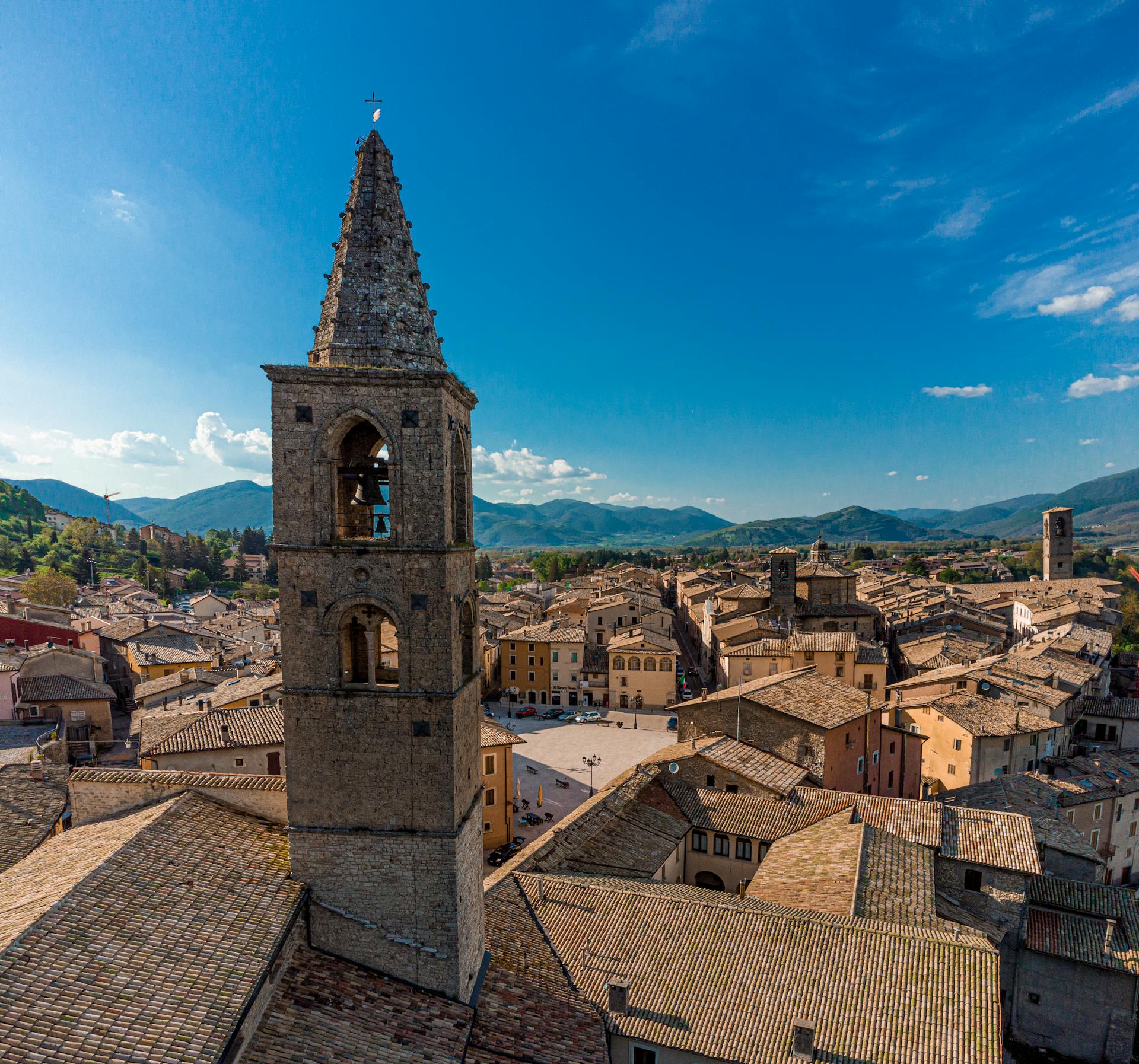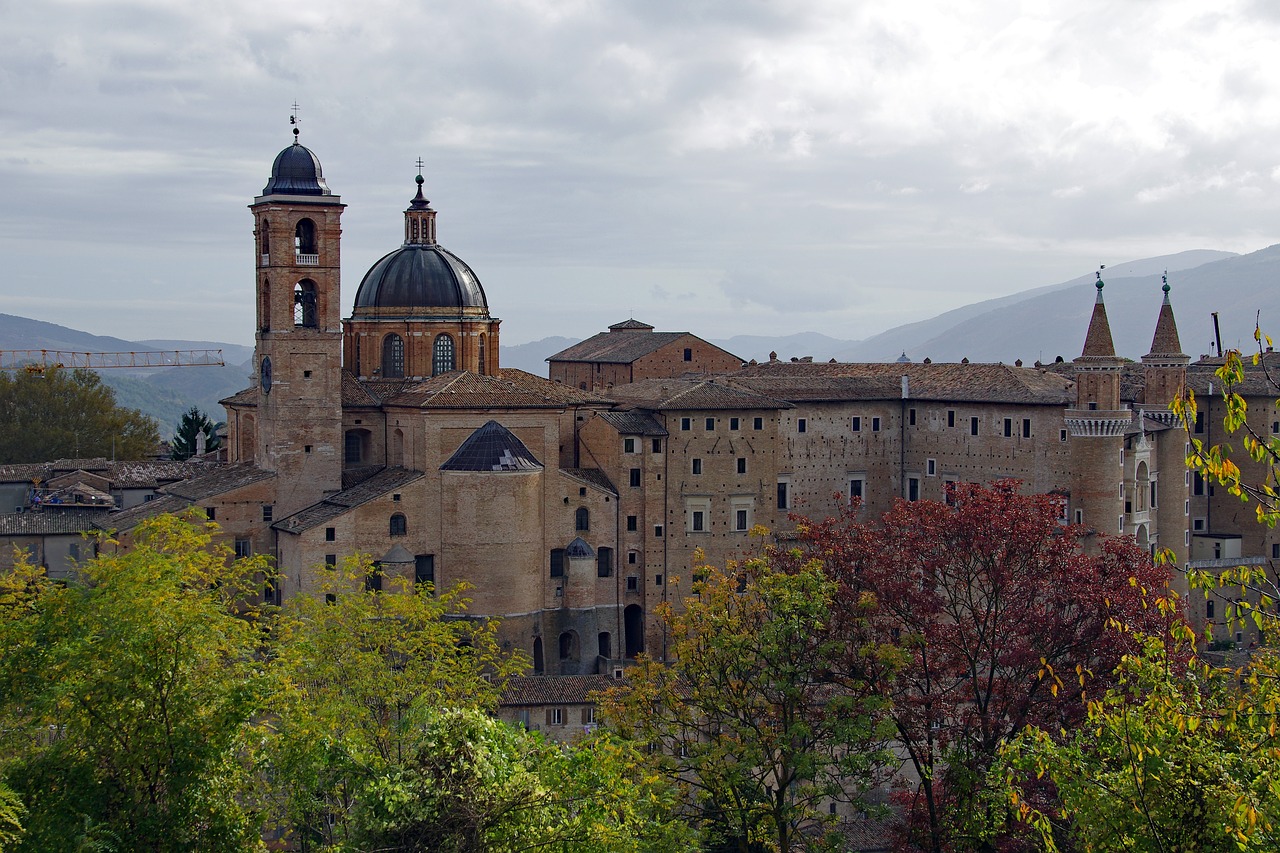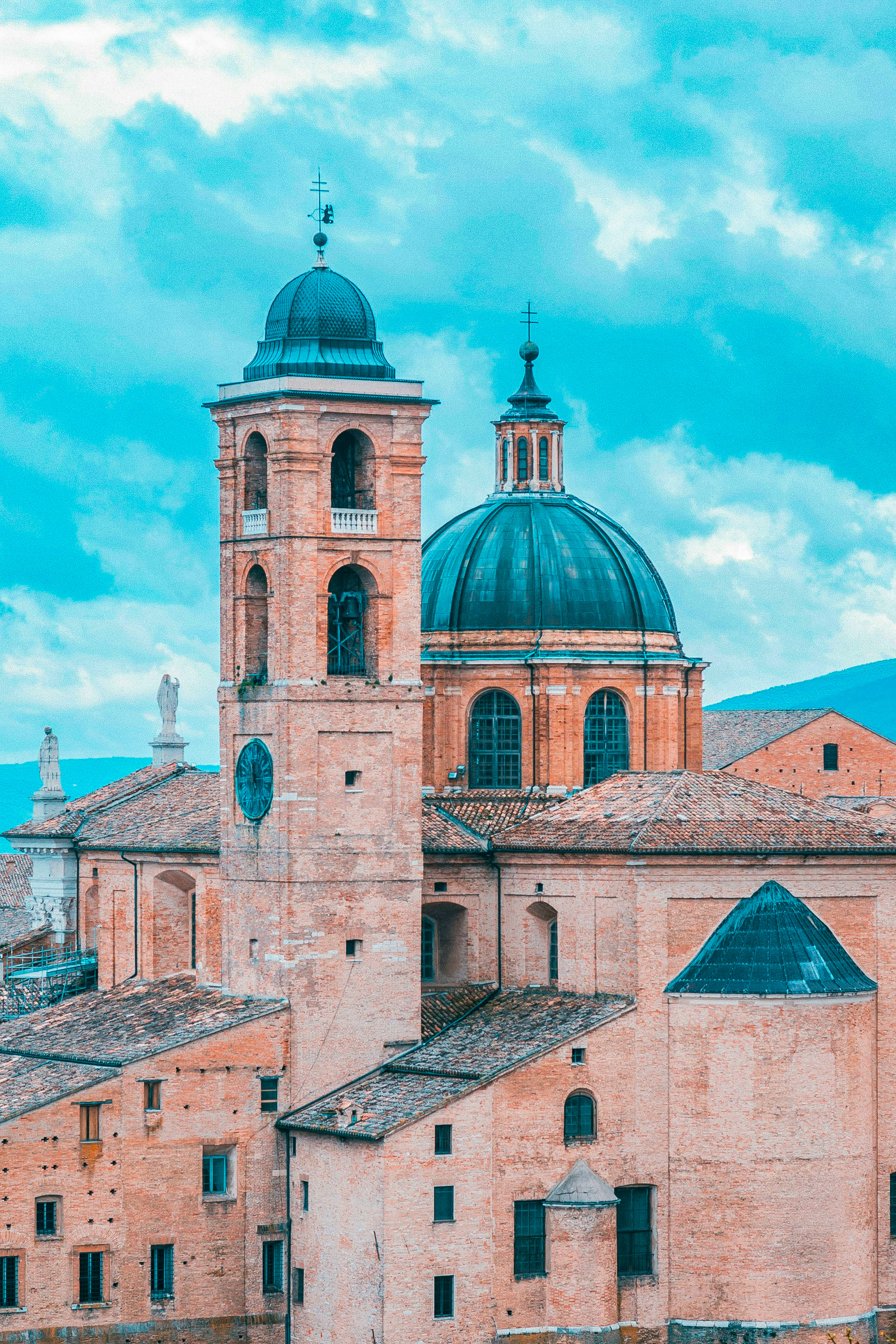You come to Italy thinking it will be a trip. You leave knowing it was a beginning
Urbino – le Marche
Urbino is a small, absolutely gorgeous, and wonderful place. Stepping into Urbino feels like entering a Renaissance painting, with its cobblestone streets winding through a labyrinth of medieval buildings and palaces.
This town and nearby Urbania remain special places for my wife and me, with many happy memories. Visit, and you'll find yourself completely enchanted.
Urbino was the first place I ever stayed in the Le Marche region, and it was the first place we ever rented a beautiful Italian cottage. We'd always stayed in B&Bs or hotels before and were a little nervous about changing, but, after our experience here, we fell in love with having our own place—it made us feel like locals. On a later trip, we discovered Ca' Virginia, and that has now become our go-to place to stay.
Nearly thirty years later, and having now visited every region in Italy and many, many towns from the far north to the far south and most of the islands, I still rate Urbino as one of the loveliest of all the many lovely sights and towns I have seen in Italy. If there is one town in Italy that is seriously under the radar, it is Urbino, and it is easily on a par with more famous Tuscan towns like Siena and Lucca. In fact, because of the lack of crowds, it is even better.
Where to Stay
Hotels in Urbino are, on the whole, a pretty miserable lot. Don't worry though; we have discovered a truly wonderful place to stay. It's about 20-minute drive away and is the Country House Ca' Virginia (click for more). The Virginia is a painstakingly restored farmhouse nestled in unforgettable scenery. Stay here and you'll experience for yourself why life in Italy can be so very delightful.
This is an ideal place to base yourself to explore the surrounding areas, from Urbino to San Leo (a delightful hilltop village) - you will need a car though.
If you'd prefer to stay right in the old town of Urbino and self-cater, then this apartment is a good option.
About Urbino
Urbino, often overshadowed by the more famous Renaissance cities in Tuscany like Florence and Siena, holds its own as a significant cultural and artistic center of the Renaissance. Urbino offers a more intimate but equally rich experience of Renaissance art and architecture.
Urbino feels like stepping back in time without the crowds typical of Florence or Siena. While Tuscany’s cities have a grander scale and broader renown, Urbino offers a concentrated Renaissance experience that feels more personal, ideal for those seeking depth rather than grandeur. A more tranquil Renaissance treasure tucked away in the hills of Le Marche.
At the heart of Urbino stands the magnificent Palazzo Ducale, the Ducal Palace, a UNESCO World Heritage Site and a masterpiece of Renaissance architecture. Built in the 15th century, this grandiose palace was the seat of power for the Montefeltro family, who ruled over Urbino during its golden age. The palace's imposing facade, adorned with intricate decorations and sculptures, hints at the opulence within. Inside, you'll find a wealth of artistic treasures, including works by renowned artists such as Raphael, Piero della Francesca, and Titian.
Don’t miss the following museums to see some of the accomplishments of the leading figures of the time: the National Gallery of Art, the Albani Museum, the Gessi Museum, the Archeological Museum, and the Typography Museum.
Drop by the university too. Founded in the 16th century, it played a pivotal role in shaping intellectual and artistic discourse during the Renaissance. Notable figures like Raphael and Bramante studied and worked here, contributing to Urbino's reputation as a center of learning and innovation.
🖼️ Immerse yourself in the Renaissance atmosphere with the help of an expert guide who will lead you to the discovery of this small and elegant center including Palazzo Ducale
Click herе to bookThe Urbino Cathedral features a grand, simple exterior and an impressive dome that fills the space with light. Inside, you’ll find amazing art like Barocci’s "Last Supper," which is a real highlight. The calm, open design of the cathedral makes it feel peaceful and inviting. Locals still come here for services, so it’s not just a historical site but a living part of the city. If you’re in Urbino, it’s definitely worth a visit for its serene atmosphere and stunning architecture, and I really recommend you attend a Sunday Mass in the cathedral if you have the opportunity to do so.
Other churches of great interest are the Church of St. Francesco, the Church of St. Domenico, and the Church of St. Spirito.
Visit the fifteenth-century home of Raffaello Sanzio (Raphael), the famous Renaissance artist. Other illustrious names born here include Donato Bramante, Girolamo Genga, Federico Barocci, Federico Brandanti, and many more. It's quite a collection of famous names for a little place like this, and the huge number of sights to see in such a small town leaves many a city looking pretty poor.

It is not only Urbino's past glories that make this town a great destination but also its vibrant present.
The city thrives as a hub of creativity and artistic expression. Its streets are lined with artisan workshops, where skilled craftsmen practice age-old traditions passed down through generations. Do support them by buying a little something if you can. It would be terrible if these traditions were to die out and these workshops were replaced by fast food chains or tacky souvenir shops. That, sadly, is happening in so much of Italy, making shopping in towns like Venice a real needle in a haystack search for quality and tradition.
I spent a week here the first time I visited, and I still hadn't seen everything. I didn't want to leave either; the town is just so seductive.
In recent years, Urbino has also emerged as a cultural destination, hosting events and festivals that celebrate its rich artistic heritage. The Urbino International Film Festival showcases the best in independent cinema, while the Urbino Chamber Music Festival attracts world-class musicians and performers from around the globe. These events bring together locals and visitors alike, fostering a sense of community and creativity that is integral to Urbino's identity.
The description of the town by Carlo Bo—the deceased president of the local university—is wonderful. I have tried to translate it to English, and although a lot is lost in translation, it still conveys the "special something" about the town.
Carlo writes: "There exist those towns where the souls remain forever open to discovery. This is Urbino, the city of emotions, unpredictable and incomparable. This is not only for the artistic patrimony, but for the city itself, for its extraordinary beauty, and for the very air that one breathes."
Whoever arrives in this magical town for the first time is in for an extraordinary surprise, a leap back in time, and a journey that lifts the spirit.
What to Eat in Urbino
Culinary delights await those exploring Urbino's gastronomic scene. From hearty, rustic dishes to delicate pastries, the city's cuisine reflects the bounty of the Marche region. Local specialties include crescia, a savory flatbread, and ciauscolo, a soft, spreadable salami. Pair these delicacies with a glass of Verdicchio, a crisp white wine native to the region, for a true taste of Urbino.
If you enjoy my site, I'd love your support.
All you need to do is book your accommodation via this link or any of the other hotel links on the website. Whether it's for travel to Italy... or anywhere else on earth, your support means the world to us.
You'll get the best deal available, and the income helps us stay independent and keep bringing you the best of Italy.

























New! Comments
Have your say about what you just read! Leave me a comment in the box below.